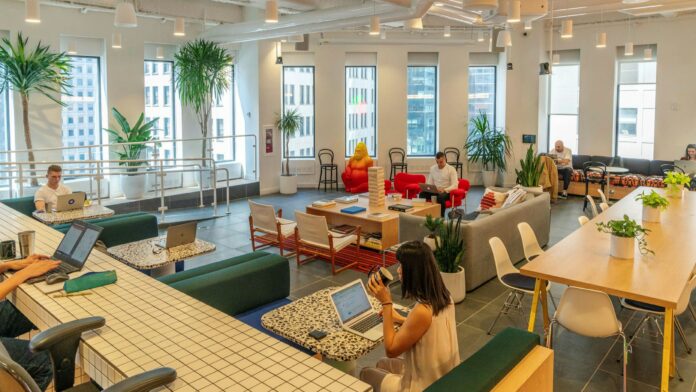Designing the Post Covid-19 workplace for Social Distancing is going to be biggest challenge in future. Personal and economic crisis demands them to resume back to normal to provide for them and for their families. Governments and all Institutions are aiming to bring people back to work as quickly and safely as possible.
With social distancing (at least 6 feet apart) being the most indispensable measure to stop the spread of the pandemic COVID-19, it is better for all offices to be ready in implementing changes in their workplace for their employees to feel safe and natural.
Artificial Intelligence (AI) and Machine Learning (ML) enabled work spaces
To complement with the efforts taken by the employees to follow social distancing protocols, AI and ML software can help by giving alerts to keep safe distances by analyzing real time video streams of the workplace. ML checks if your employees are social distancing properly and notify when their behavior deviates from a desired standard.
Amazon has already started taking the aid of AI and ML to check on social distancing on their warehouse staffs.
Samarth Diamond, Gujarat plans to use an AI platform from Glimpse Analytics in their factories. “It will surely be helpful for the safety of employees and their comfort level, and it will be helpful to show it to authorities that we are adhering to regulations”, confidently says Parth Patel, Manager of Samarth Diamond.
Drishti, a startup with engineering office in Bangalore is developing AI tools that uses computer vision surveillance of workers..
Another breakthrough technology tool is Landing AI ‘Social Distancing Detector’ that can detect if people are keeping safe distances by analyzing the video streams. This tool can be integrated with the surveillance cameras to monitor the workers. It follows three elaborated approach: calibration, detection, and measurement. With regard to calibration, the 2-D camera video stream is transformed into bird’s-eye view. In detection phase, bounding boxes are set around people by detecting them. Finally, in measurement phase, the distance between the bounding boxes (people) are measured and is highlighted as red lines between people who are too close to each other.
Newcastle University’s Urban Observatory has also developed deep learning algorithms that can automatically measure physical distance between people.
NOTE: The use of computer vision can intrude into a person’s privacy and individual rights, hence it is advisable to use them with transparency and with informed consent.

